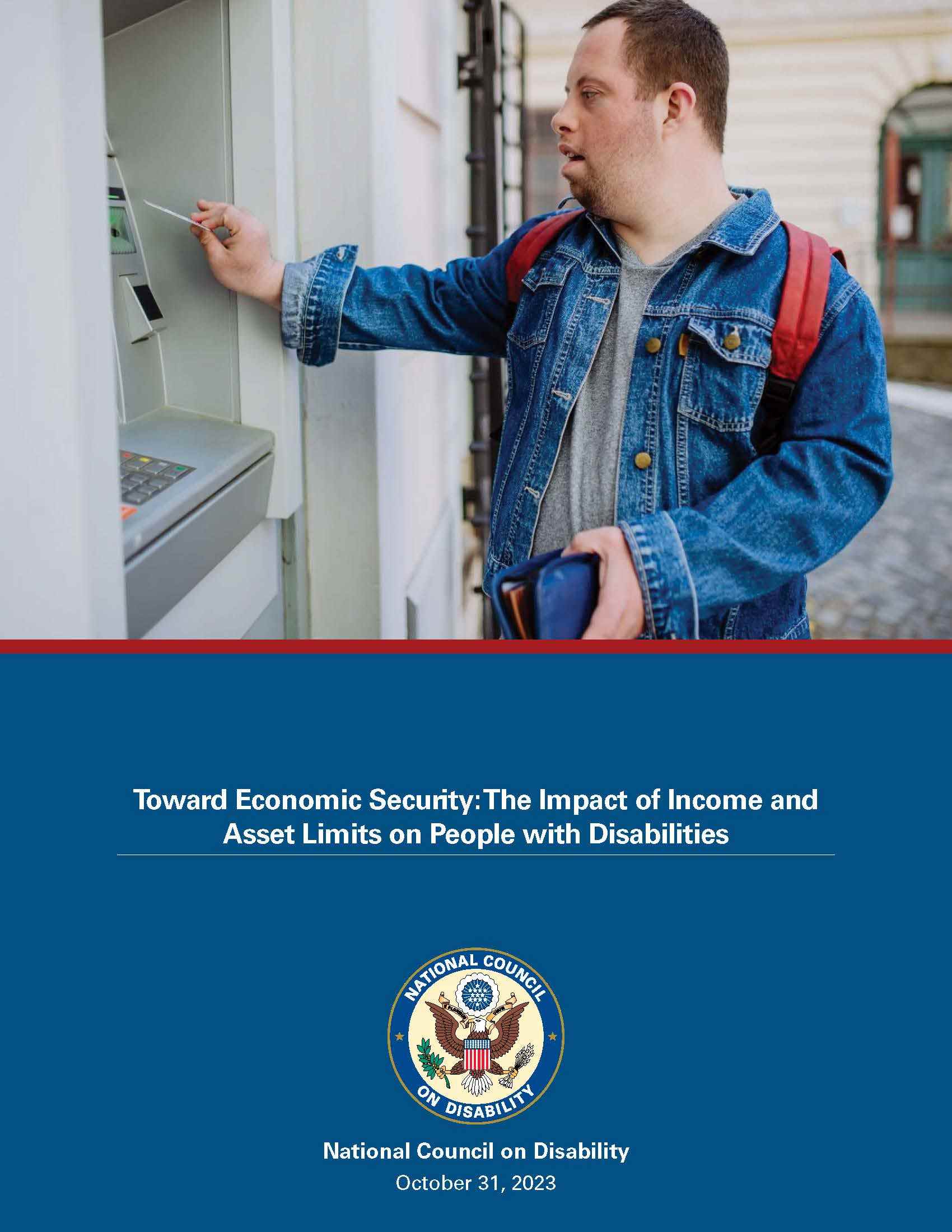2023 Progress Report: Toward Economic Security: The Impact of Income and Asset Limits on People with Disabilities

October 31, 2023
SCOPE AND PURPOSE: The Americans with Disabilities Act of 1990 (ADA) aims to promote “equality of opportunity, full participation, independent living, and economic self-sufficiency” for people with disabilities. Despite the promise of the ADA, more than three decades later, most people with disabilities remain significantly poorer compared to individuals without disabilities, with the concerns compounded for multiply marginalized individuals. Government and other public resources are vital to ensure that families with disabilities can offset additional disability related costs to reach and maintain economic self-sufficiency. However, limited income and asset building opportunities and Medicaid estate recovery programs present barriers to achieving and maintaining generational wealth and economic independence. In its report, NCD examines the impact of asset limits on health- and employment-related outcomes for people with disabilities.
This report examines the implications of asset limits in government-sponsored social safety net programs on the economic self-sufficiency and financial independence of people with disabilities and focuses on four critical areas of public policy: health care, cash benefits provided through Supplemental Security Income (SSI), employment, and asset building and wealth protection.
This report offers findings and recommendations for the Administration, Congress, and states in the areas of health, employment, and asset building and wealth protection to bring about critical policy and systems change.
KEY FINDINGS: Although people with disabilities have higher costs of living due to disability-specific expenses and needs, people with disabilities consistently have poorer outcomes for employment, earnings, savings, and overall net wealth.
Working-age adults with disabilities remain employed at less than half the rate of people without disabilities and are twice as likely to live in poverty.
While many states are increasing minimum wage to account for inflation, people with disabilities are often impacted by benefits cliffs — meaning that they earn higher income than permitted by income or asset limits but not enough to support themselves without access to means-tested benefits.
Access to Medicaid can be a valuable pathway to employment for people with disabilities who depend on Medicaid to cover medical care and support services to enter or remain in the workforce. Unfortunately, tying income and assets limits to eligibility for health care and medical insurance coverage via Medicaid imposes limitations that force people with disabilities to choose between working at levels that allow them to maintain healthcare benefits, or risk losing access to health care when employed at higher levels.
State data submitted to the U.S. Department of Labor (DOL) under the Workforce Innovation and Opportunity Act (WIOA) is insufficient and incomplete. WIOA-supported agency integration efforts such as employment network supports and services provided through the Ticket to Work Program, substantially improves employment outcomes for people with disabilities.

